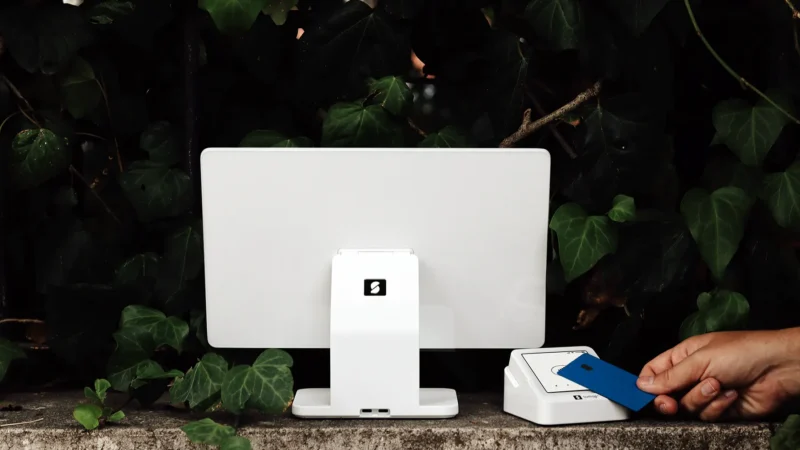How to Get Off MATCH: Everything You Need to Know
- January 7, 2022
Mastercard’s MATCH list is used to control high-risk merchants by informing issuing banks and other credit card processing services about merchants with a history of fraud or suspicious activities before they issue a line of credit to these individuals. This gives these financial institutions the chance to decline without further risk.
Here is a closer look at how you — as a merchant — can end up on Mastercard’s MATCH list and what being removed from it entails.
What is the Match List?
Mastercard compiles and manages a blacklist called the Merchant Alert To Control High-Risk. This blacklist, commonly called the MATCH list, is a database of merchants or business owners whose accounts have been terminated or have been deemed a significant risk for payment processors during the past five years for any number of reasons. The acquiring bank is responsible for adding merchants to the MATCH list, screening merchant applicants, determining risk, and managing terminated merchant accounts. While Mastercard’s MATCH list is one of the most efficient informational tools banks can use to screen potential applicants, being on this blacklist can bring serious trouble. That’s because banks and processors typically decline engaging with merchants who end up on the MATCH list database.
Once you are on Mastercard’s blacklist, you have to wait five years to fall off of the list automatically, i.e., to be returned to normal status — that is when you will be permitted to process free and clear. For most merchants, five years is far too long to wait without processing. Not too many businesses in today’s day and age can survive without credit card processing.
Global can help.
To be removed from Mastercard’s MATCH list, a merchant or business owner must follow the credit card giant’s standard rules and procedures. Most merchants don’t even realize they’re on the MATCH list until they submit an application for a merchant processing account to a new processor, and are subsequently declined. By this time, unfortunately, you’ve already been placed on the MATCH list and you will be prohibited from processing for 5 years. Since 2008, Global Legal Law Firm has been fighting for merchants to be removed from the MATCH list; Global is working twenty to forty MATCH/TMF cases each month – this unique experience can help you resolve your matter in a timely and effective manner with minimal disruption to your business.
Have a MATCH TMF issue?
Contact Global Legal
Contact us today to schedule a complimentary consultation.

Terminated Merchant Files
One of the largest card brands, Visa, operates a database called the TMF List, which stands for Terminated Merchant Files. At Mastercard, this database is called the MATCH list, also known as the Member Alert To Control High-Risk Merchants (MATCH). Both lists operate similarly and contain information about merchant accounts. The vast majority of these accounts found on either list have been closed by credit card processors globally. Most often, a merchant is placed on the MATCH/TMF listfor high chargebacks or for violating Mastercard’s rules in one of fourteen different ways. By far, the two most common reasons for MATCH list placement are excessive chargebacks or transaction laundering.
All credit card processors routinely check the MATCH list to verify whether any new, potential users have a TMF. They must also add merchants to the MATCH list if their accounts are closed for meeting specific criteria, like chargebacks, merchant collusion, illegal transactions, or fraud. This is typically done one day after the account is terminated or becomes eligible for termination.
TMFs are only supposed to be informational tools, but many credit card processing companies refuse to do business with merchants who are on Mastercard’s database. This is because Mastercard’s database is the only one with a broad, global reach.
What Happens When You’re Put on the MATCH List?
When an acquiring bank detects a high-risk merchant or terminates an account, it records the business name, the principal owner’s details, and other business partners on file. When the blacklisted merchant attempts to open an account with another provider, the new card processor must run an inquiry on the MATCH system before signing an agreement according to Mastercard’s security and procedure rules.
One of the consequences of being on the MATCH list is a high rate of rejections for merchant account applications. Without an account, businesses cannot process electronic payments, which ultimately causes more significant problems like revenue loss and damaged reputation.
Several card processors specialize in working with high-risk merchants, but this often comes at a higher fee and strict or limiting agreement terms.
What To Do When You Find Out You’re on the MATCH/TMF List
There are things you can do to protect your business after a MATCH/TMF listing.
Find Out Why You’re on the MATCH List
If you received a notification of MATCH placement, the reason for this might be included in the document. However, if you find out about the placement when applying for a new merchant account, call a MATCH List law firm to determine why.
Speak with a MATCH/TMF List Lawyer
When you find out why you’ve been MATCH’d, an attorney will help you understand your situation, legal options, and the likelihood of removal. Payment processors or banks are also likely to act on the matter more promptly when corresponding with a lawyer rather than the business owners. In most instances, MATCH list removal is possible.
Global Legal is an industry leader in MATCH/TMF removal, having litigated and won against large financial institutions such as PayPal, Fiserv, and American Express.
Explore Alternative Payment Processing Solutions
Global can connect you with trusted, US-based processors who specialize in working with high-risk merchants.
However, these options come at a cost which includes:
- Higher setup and processing fees
- Requirements for reserve funds
- Risk monitoring measures for merchants
- Long-term contracts with penalties for early termination
Virtual wallets and crypto may also come in handy at this time, but they can be limiting due to customer diversity. Remember, alternative payment providers are not obligated to work with a high-risk merchant and may decline your application depending on your business and the reason you were MATCH’d.
What Are the Steps to Follow to Get off Mastercard’s MATCH List?
Here are the steps to follow for your MATCH/TMF removal and how an attorney can help you if you qualify.
Step 1: Gather Information and Documentation Regarding the Issue
The documents and other details you gather will serve as evidence to support the MATCH removal, especially if you’ve been placed by error. A MATCH list law firm will identify the documents that matter most depending on your situation and prepare a compelling case to present to your past payment processor. Examples of documents you may gather here are merchant contracts and agreements, financial records, and compliance certifications.
Step 2: Address and Fix Your Reasons for Being MATCH’d
Next, you must resolve the reasons you were added to MATCH. This often involves employing the necessary measures to uphold regulatory compliance, such as updating your policies, scheduling more internal audits, and establishing stronger oversight mechanisms. As you do this, maintain detailed records of all steps you’ve taken to address the issue to act as evidence when filing an appeal for removal.
The attorneys at Global serve as legal advisors for MATCH’d businesses by explaining the applicable laws and evaluating new compliance measures to ensure they meet the state, federal, and card brand rules.
Step 3: Contact a MATCH Lawyer to Fight for Your MATCH/TMF Removal
When hiring a lawyer, it’s best to work with one who specializes in electronic payment agreements because they understand what acquiring banks are looking for when handling removal requests. Because of Global’s decades of experience representing top financial organizations in the electronic payment industry, our MATCH removal letters carry a lot of authority and influence among payment processors.
Step 4: Monitor the Progress of The Appeal
A MATCH list lawyer facilitates this back-and-forth communication and follows up with your past payment processor so you can focus on getting the business back up and running. Remember to record all interactions with your card or payment processor representatives.
What Are Mastercard Rules and Standards for Credit Card Processors?
Mastercard has also listed several standards and procedures that credit card processors and banks must meet, including the use of the member alert system to control high-risk merchants (MATCH). They include:
- Diligently updating the MATCH list regarding merchant termination
- Checking the MATCH database before issuing credit to a merchant
- Acting in good faith
If a credit card processor fails to place a merchant who has violated MATCH-related criteria on Mastercard’s TMF database, the processor must pay any losses, including unpaid chargebacks.
How Can You Avoid Landing on Mastercard’s MATCH List?
To avoid landing on the MATCH list, merchants should consider:
- Ensuring they have a remarkable track record of solid data security in accordance with guidelines set forth by the PCI Security Standards Council, including the ability to process credit card payments efficiently and securely
- Establishing a strict verification process, including but not limited to CVV codes, card expiration dates, and billing address
- Installing security patches to ensure the efficiency of their card processing system
- Strengthening the safety and security of their card payment environment

Mastercard’s MATCH List Frequently Asked Questions
Here are the answers to some of the most frequently asked questions surrounding MATCH.
The MATCH list allows credit card processors, banks, and merchant service providers to list merchants whose accounts are high-risk or have been terminated for violating Mastercard’s reason codes. Other processors can then search the list to find out if a merchant is blacklisted before signing an agreement. This makes it difficult for flagged merchants to process payments and find new service providers.
The MATCH list (Member Alert to Control High-Risk Merchants) is a database managed by Mastercard to help acquiring banks screen flagged merchants.
If you’re on the list, it’s usually because a previous processor or acquiring bank reported your business for one or more issues, including excessive chargebacks, identity theft, suspected fraud, transaction laundering, or a violation of bank card rules.
It is possible to determine whether or not you’re on the MATCH list. Simplysend an email to matchbusinessowner@mastercard.com for information as to placement on the MATCH list.
Mastercard may provide information as to:
- Whatentity placed you on the MATCH list;
- Whenyou were placed;and
- The reason code associated with the placement.
If you suspect you’ve been added in error or want to seek removal from the list, you can get legal support to help you make your case.
Our team of electronic payment experts will investigate your listing, contact the appropriate institutions, and dispute any wrongful placement.
Yes, Visa has its version of the MATCH list, called the Terminated Merchant File (TMF).
Although the names differ, the purpose is the same: to track businesses whose merchant accounts were terminated for fraud, excessive chargebacks, or violations of card network rules.
Whether you’re flagged under Visa TMF or Mastercard MATCH, the consequences are similar.
Our legal team is experienced in handling both, giving you a better chance of restoring your merchant processing access.
When you’re added to the MATCH list, a reason code is assigned based on your issue or violation. Here are what Mastercard’s reason codes mean:
- 01. Account Data Compromise: The merchant’s systems were breached, leading to the exposure of cardholder data.
- 02. Common Point of Purchase: Account data stolen from the merchant was used fraudulently at other locations.
- 03. Laundering: The merchant was found to have laundered funds or misrepresented the nature of their transactions.
- 04. Excessive Chargebacks: The merchant’s chargeback ratio exceeded acceptable limits, usually exceeding 1% of transactions and $5,000 in total chargeback volume over that same time period.
- 05. Excessive Fraud: The merchant’s account was linked to a high volume of fraudulent transactions.
- 06. Currently not in use.
- 07. Fraud Conviction: The principal owner or partner was convicted of fraud.
- 08. Mastercard Questionable Merchant Audit Program: The merchant was identified as a questionable merchant based on Mastercard rules.
- 09. Bankruptcy/Insolvency: The merchant’s business filed for bankruptcy, entered liquidation, or became otherwise insolvent.
- 10. Violation of Standards: The merchant violated Mastercard’s rules, such as performing prohibited transactions.
- 11. Merchant Collusion: The merchant was involved in fraudulent schemes in coordination with others.
- 12. PCI-DSS Non-Compliance: The merchant failed to meet PCI-DSS security standards for handling cardholder data.
- 13. Illegal Transactions: The merchant processed payments for illegal products or services.
- 14. Identity Theft: The identity of the merchant or its principal owners was assumed either to create a merchant agreement or to use one unlawfully.
Credit card processors and independent sales organizations (ISOs) are the ones who generally place the merchants on the MATCH list. Such processors are in charge of monitoring risk for accounts held by merchants. Information about who is responsible for putting such entities on the MATCH list is not readily available. The card processor who declines the merchant’s application does not provide any information, and the only way to find it out is if the merchant has the MATCH system.
The two most common reasons for MATCH list placement are excessive chargebacks and transaction laundering, which can jeopardize your ability to process payments. You may also be placed on the MATCH list for violating standards, being a victim of identity theft, entering into prohibited and illegitimate transactions, breaching the merchant agreement, committing fraud, or failing to meet the financial obligations resulting from insolvency. You might also land on the MATCH list if there is any proof on record to substantiate that an account has been opened fraudulently.
Unfortunately, sometimes, the reason why you’re placed on the list is totally out of your control, such as when your identity has been stolen and used to open a payment processing account. If a merchant is trying to be removed from the MATCH list, these cases are typically easier to argue than those where the merchant has an excessive chargeback history (in fact).
A competent lawyer at Global Legal can help you discover who has put you on the MATCH list and guide you on how to get off the MATCH list. Innovations in the industry now allow Global Legal the ability to guide you to discover who place you on MATCH list in about one day’s time.
The MATCH list is a blacklist database of merchants or business owners whose accounts have been terminated or have been deemed a significant risk for payment processors during the past five years for any number of reasons.
A MATCH listing typically lasts for five years from the date of entry. During this time, most acquiring banks will see the flag when you apply for a merchant account, making approval extremely difficult.
After five years, Mastercard should automatically remove the listing.
However—unresolved issues, such as unpaid processor fees, unresolved fraud claims, or legal matters, can still be an issue and may affect your ability to open a new merchant account with an acquiring bank.
If you believe you’ve been wrongfully listed or want help to get delisted sooner, our MATCH list attorneys at Global Legal Law Firm can review your situation and advise you on the best course of action.
Yes, early removal is possible! will likely require the assistance of a law firm.
Merchants cannot remove themselves from the MATCH list: only theacquiring bank that added them to the MATCH list can request removal from Mastercard.
These banks rarely (if ever) take this step unless the issue has been fully resolved and the merchant makes a compelling, well-documented case (as an experienced MATCH list removal attorney would).
Most merchants who attempt to get removed on their own tend to find themselves dealing with bank customer service representatives or risk department agents who lack the authority to make removal decisions.
However, a MATCH list attorney can reach out to the appropriate legal departments and leverage industry relationships to effectively advocate on your behalf.
Our MATCH list experts at Global Legal Law Firm help merchants in the following ways:
- Review the listing and identify the official reason code
- Investigate the circumstances that led to the placement
- Communicate directly with the acquiring bank on the merchant’s behalf
- Build and present a strong legal case for early removal
- Escalate disputes when a listing is inaccurate or unjustified
Getting off the MATCH list is a complex process that typically requires professional assistance. Here are the ways merchants can leave the MATCH list:
1. Automatic Removal After 5 Years
Mastercard automatically removes businesses five years after their most recent listing. This removal occurs monthly and is the most common way for merchants to exit the list.
2. Removal Because of Error
If you believe you were placed on the MATCH list mistakenly, you should contact a law firm that specializes in MATCH list removal services.
3. Removal for PCI Compliance (Reason Code 12)
If your listing was because of PCI DSS non-compliance, becoming fully compliant and obtaining verification from a Mastercard-certified forensic assessor can support your case for early removal.
Being added to the MATCH list or the Terminated Merchant File can impact your business operations.
With extensive experience handling MATCH list cases, Global Legal Law Firm has a proven track record of helping businesses exit the MATCH list before the 5-year duration is up.
Our MATCH list attorneys work with you to pinpoint the specific reason for your listing and craft a personalized legal strategy to secure your removal as quickly as possible.
Generally, Global Legal Law Firm is resolving MATCH list removal matters one way or another in a three to six month time frame. The rate at which your matter is resolved is reliant almost entirely on the placing entity.
If you find out you’re on the MATCH list, the first step you should take is to contact a law firm that has expertise in MATCH list removal, such as Global Legal Law Firm. Global’s MATCH team will be able to direct you quickly and expertly towards taking the necessary steps to seek MATCH list removal.
Yes—though typically it will be difficult, as being on the MATCH list labels your business as high risk.
The MATCH list functions as a prohibition list as it denies merchants the ability to obtain processing.
When you’re on the MATCH list, traditional banks are likely to decline your application. However, there are high-risk merchant account providers who are willing to work with MATCH-listed businesses.
You should expect tighter conditions: higher processing fees, rolling reserves, and frequent compliance reviews with these providers.
Global Legal Law Firm can connect you with processors who have been successful getting many MATCH listed merchants up and running with processing.
Recommended Posts
-

Can High-Risk Merchants Get Off the MATCH List?
If you’ve been put on the Members Alert to Control High-Risk...
Read More -

Federal Court Confirms Payment Processing Contracts with Cannabis Merchants Do Not Violate the Controlled Substance Act, and Are Therefore Enforceable
Background and History Title II of the Comprehensive Drug Abuse Prevention and Control...
Read More -

Chargeback MATCH List | How it Works & How to Get Off
Businesses that accept electronic payments face unique challenges, including cybersecurity, maintaining...
Read More